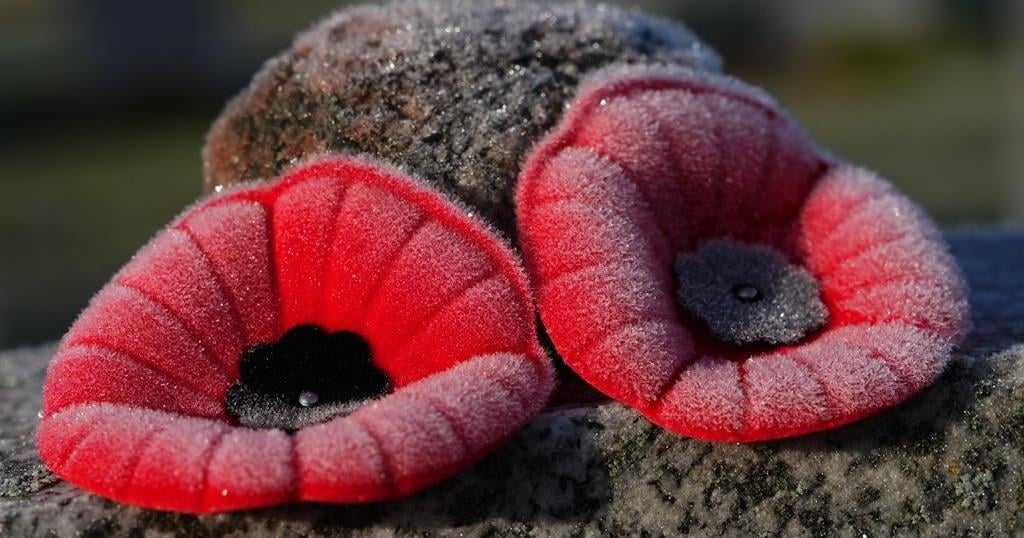OTTAWA — Canada’s longstanding resistance to NATO’s involvement in the Arctic appears to be thawing amidst warming temperatures and a coinciding increase in Russian and Chinese activity in the region.
Prime Minister Justin Trudeau is hosting a visit by NATO Secretary General Jens Stoltenberg this week, with the two scheduled to tour a military radar site in Nunavut on Thursday before they head to an air force base in Alberta on Friday.
Senior Canadian and NATO officials say Stoltenberg’s visit is intended to highlight that the Arctic is a security priority for Canada and the alliance, as rapid melting from climate change makes the region more accessible to friends and foes alike.
Russia’s invasion of Ukraine in February has also upended post-Cold War assumptions when it comes to security in Europe, but also North America, where Canada and the United States are now in talks about upgrading the continent’s aging defences.
The tour is noteworthy as it represents the first visit by a NATO secretary general to the Canadian Arctic since the military alliance was first founded in 1949 to protect against the Soviet Union.
Canada has long opposed greater NATO involvement in the Arctic, which included vetoing a statement on the alliance’s role in the Arctic during a major summit in 2009, though experts are divided over why.
Some believe the issue relates to an ongoing dispute with the U.S. and other allies over ownership of the Northwest Passage, which Canada claims as domestic waters but others consider an international waterway.
Others say Canadian officials have been leery of letting non-Arctic members such as Italy and Spain have a greater say over what happens in the Far North. Concerns about militarizing the Arctic and provoking Russia were also cited.
Where they agree is that Stoltenberg’s visit appears to represent an easing of Ottawa’s past reluctance to work with NATO on the Arctic, even if Canada isn’t opening the door completely.
“It’s more of a sign of continued solidarity between NATO’s members as opposed to an actual signal that they are opening the door to NATO exercises in the Canadian Arctic,” said Andrea Charron, an expert on North American security at the University of Manitoba.
Speaking on background, a senior government official said Canada’s formal position on NATO and the Arctic has not changed. But the official also acknowledged the new security environment caused by climate change and Russia’s invasion of Ukraine.
An internal briefing note prepared for then-Department of National Defence deputy minister Jody Thomas last year underscores the growing threat posed by climate change when it comes to Canadian defence and security, including in the Arctic.
“Climate change and security is a growing topic of interest among our Five Eyes and NATO partners,” says the note, drafted ahead of a high-level meeting of senior government officials in May 2021 and obtained through the Access to Information law.
University of Calgary professor Rob Huebert, who is currently writing a book on Canadian Arctic sovereignty, said the Liberal government first hinted at more engagement with NATO in the Arctic when it released its defence policy in 2017.
“They made a very public changing of that policy saying NATO has to be engaged,” he said. “The Liberals were the first ones to do it.”
While little actually occurred in the intervening period, Huebert believes the re-emergence of Russia as a threat to North American and European security — and growing concerns about China — have changed the equation.
So too has the pending addition of Finland and Sweden to the alliance, said NATO Association of Canada president Robert Baines.
“With Finland and Sweden coming in, they are heavy hitters, when it comes to Arctic defence,” Baines said. “They’re always training. And hopefully that’ll also rev up with Canada. I would love to see a full-fledged NATO exercise in the north of Canada.”
This report by The Canadian Press was first published Aug. 24, 2022.
Lee Berthiaume, The Canadian Press
Related


































